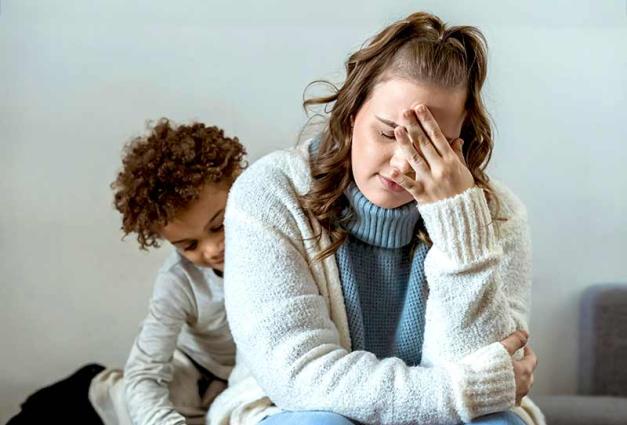For better or worse, social media have become a part of daily life for many of us, but exactly how does social media use relate to our mental health or our connections with others? To borrow a common relationship status phrase: it’s complicated.
Perhaps you are the kind of person who uses social media to share what you are doing with others or perhaps you scroll through your social media feed to see what everyone else is doing. Maybe it is some combination of both. Whatever your motivation, one factor that may drive some social media users is “fear of missing out,” commonly known as FOMO.
What Is FOMO?
On surveys, people would be considered higher on FOMO if they agreed with phrases such as “I get anxious when I don’t know what my friends are up to” or “I get worried when I find my friends are having fun without me.” As we discuss below, FOMO may be essential in understanding whether social media use is good for you.
Research often shows that teens who use more social media accounts tend to have more symptoms of anxiety and depression. In our research we find this is true but only if they also experience FOMO. If they don’t have such worries, social media may not be such a problem. This suggests that teens who worry about what others are up to—things that they aren’t being included in—may be better off if they stay off social media.
Our research also shows that FOMO is important to understanding the connection between adolescents’ social media use and sleep problems. Like moths to a flame, young people who want to keep up with what others are doing may be attracted to the glow of their social media feeds at night, when they probably should turn off the phone and rest in preparation for the next day’s events.
Digging Deeper Into FOMO
Because of these findings, I was led to examine how we would try to reduce FOMO and to even think more about what FOMO actually is. Along with a co-author, Megan Wong, I studied the presence of FOMO in different age groups; 14-17 year-olds, 24-27 year-olds, 34-37 year-olds, and 44-47 year-olds. We also wanted to see if FOMO was related to personality variables like self-esteem, loneliness, and self-compassion (think of self-compassion as how well we pick ourselves up after bad experiences).
We expected FOMO to be highest in teenagers and for it to be lower in each older age group. That is not what we found. On average, FOMO was just as high for adults as adolescents. Instead of age being a predictor, FOMO was related to greater loneliness, as well as lower self-esteem and lower self-compassion.
This led us to decide that a deeper dive into self-compassion may be key for how to reduce FOMO. Mindfulness, often described as being clearly aware of one’s sensations and experiences or living in-the-moment, is part of self-compassion. Perhaps becoming more mindful of the experiences taking place right in front of us (and not on the phone in front of us) leaves less room for FOMO.
If this is so, it may help to disconnect from others’ activities and reconnect with our own. We don’t need to shun others to do that. Instead, we need to try to better interact directly with people who are important to us. Besides, living in the moment, especially our own moment, is probably more enjoyable than getting lost in the distant moments of others. After all, we won’t fear missing out if we are, in fact, included in these moments.
Unfortunately, the COVID-19 pandemic has changed our relationships with social media and limited our ability to have direct interactions. Most of us probably use digital media more now out of true work- or school-related necessity. Social media also provide ways to connect with others whom we normally would interact with face-to-face. So, it is unclear how FOMO is playing into our current lives. One of our more recent studies found that high schoolers who had more accurate COVID-19 knowledge experienced less FOMO. Maybe for those teens, accurate information enabled them to accept the need for limited face-to-face interactions. Thus, concern for what others were doing became lower because they realized that all of us are missing out on some things now. With friends and family doing fewer activities outside the home, there was also less to be left out of.
Getting back to normal may mean revisiting our use of social media apps when we don’t need them as much for social interactions. That is, we may choose to unplug, taking more joy in what we are doing, and having less concern for what others are doing. Ironically, feeling some joy in missing out could actually enhance meaningful connections with others when we do interact with them.
For Further Reading
Barry, C. T., & Wong, M. Y. (2020). Fear of missing out (FoMO): A generational phenomenon or an individual difference? Journal of Social and Personal Relationships, 37(12), 2952-2966. https://doi.org/10.1177/0265407520945394
Scott, H., & Wood, H. C. (2018). Fear of missing out and sleep: Cognitive behavioural factors in adolescents’ nighttime social media use. Journal of Adolescence, 68, 61-65. doi: 10.1016/j.adolescence.2018.07.009
Christopher Barry is a Professor in the Department of Psychology at Washington State University. He is an Associate Editor of Journal of Child and Family Studies and an Assistant Editor of Journal of Adolescence.




